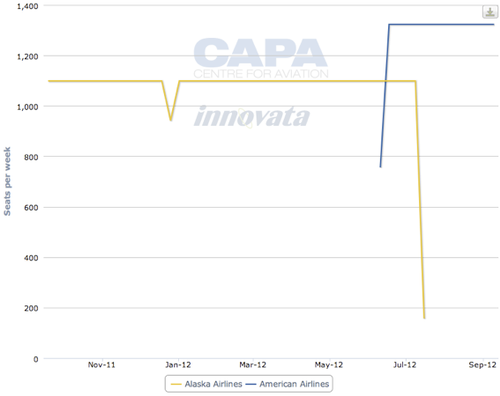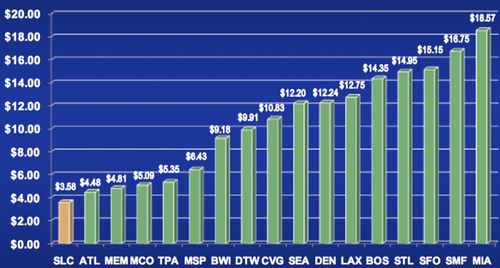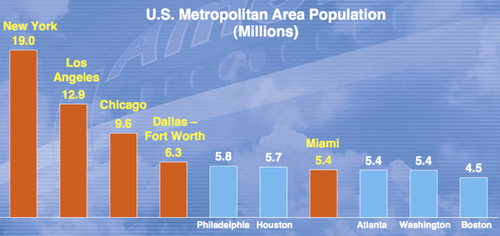American quietly relaunches Miami-Seattle as high costs force Alaska to Fort Lauderdale
American Airlines has opted to quietly backfill flights from Miami to Seattle being abandoned by Alaska Airlines, which has chosen to transfer flights to lower-cost Fort Lauderdale International Airport. It appears American believes it can capitalise on its dominant carrier status at Miami to operate flights to Seattle profitably.
The new flights were rolled softly, placed on a list of new routes featured on American's website and loaded into its schedules. American opted not to unveil the routes through a normal announcement.
American is actually relaunching seven weekly flights from Miami to Seattle on 14-Jun-2012 with Boeing 757-200s, after cutting the market in the aftermath of the September 2001 terrorists attacks. American is operating a higher density aircraft than Alaska, resulting in an increase in the number of weekly seats available in the market by 224 to 1323.
Miami International Airport to Seattle/Tacoma International Airport
(seats per week, one way): 19-Sep-2011 to 16-Sep-2012
Alaska is discontinuing flights after a decade of operating the Miami-Seattle route, and relocating its Seattle service to nearby Fort Lauderdale, which is 43km away from Miami. Alaska concluded transferring the flights allows it to serve the same geographic area at lower costs.
Miami is one of the highest cost airports in the US, and the increased expense coupled with American's dominance at the airport have resulted in most carriers opting to offer flights from Fort Lauderdale to serve southeastern Florida. Miami's cost per enplaned passenger was estimated at USD18.57 per passenger in late 2011. Salt Lake City Airport calculated enplanement costs to show how competitive its cost were relative to other US airports.
Airport cost per enplaned passenger: Sep-2011
Miami's higher costs coupled with Alaska's dominance in Seattle could create challenges for American in achieving favourable profits on the Miami-Seattle pairing. Alaska is taking its passenger base, a significant portion of which is likely enrolled in its loyalty programme, when it transitions over to Fort Lauderdale.
For the moment, the carriers are pricing their transcontinental flights within USD10 of each other for travel in late July of this year. On a roundtrip flight from 23-Jul-2012 to 25-Jul-2012, Alaska's lowest price is USD460.60 while American is charging USD479.60.
Even though the Seattle-southeast Florida market is likely origin and destination traffic, Alaska does have the advantage of a high level of connectivity from Seattle to its dense network in the northwestern US, which could generate some incremental revenues. Ironically, American might garner some incremental revenue from Miami through connections at Seattle as a result of a codeshare pact it has with Alaska.
Both carriers will also benefit from cruise ship traffic from the US Pacific northwest to Southeastern Florida as Carnival, Royal Caribbean and Norwegian have a significant presence in the region.
Revenue generating potential in Miami
American and its regional affiliates account for nearly 70% of Miami's traffic, which means the carrier is most exposed to Miami's higher than average costs. Fitch Ratings in mid-2011 estimated Miami's cost per enplanement could reach USD30 during the next five to seven years. The population of the Miami metropolitan area is also lower than other larger cities, which means its revenue generating potential could be less favourable than other larger markets with a stronger catchment area.
But American's strong presence at the main US gateway to Latin America gives it a revenue generating advantage in Miami. Its Miami hub joins two of its other "cornerstone" markets - Dallas and Los Angeles - where it is the dominant carrier. American is likely willing to absorb the higher costs of operating at Miami and spread it across its network in order to retain its crucially important distinction of being the largest player between the US and Latin America.
American Airlines cornerstone markets metro area population (in red)


